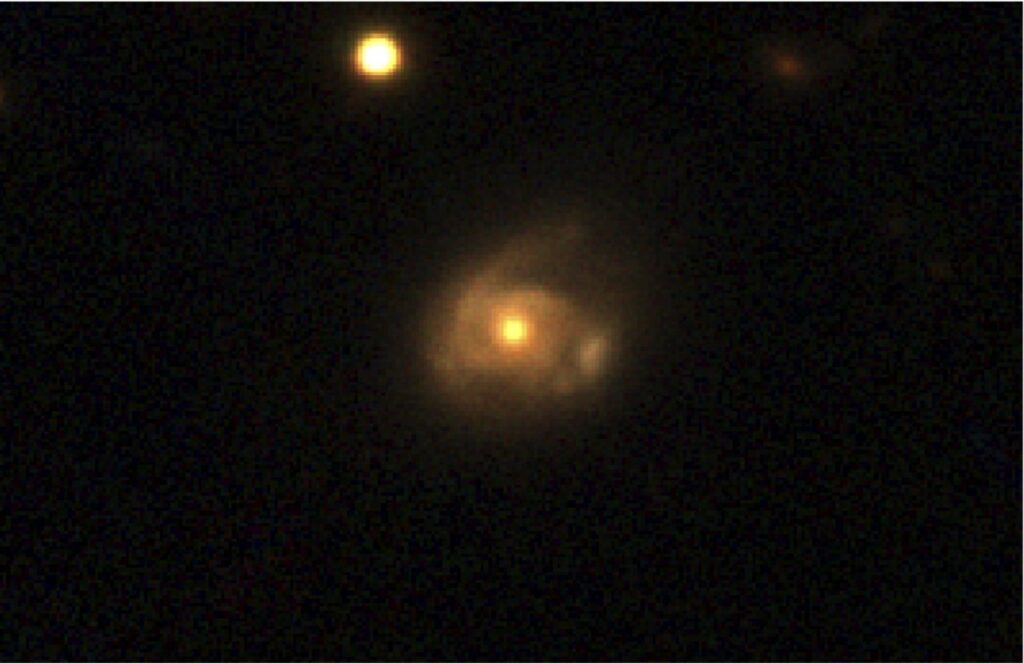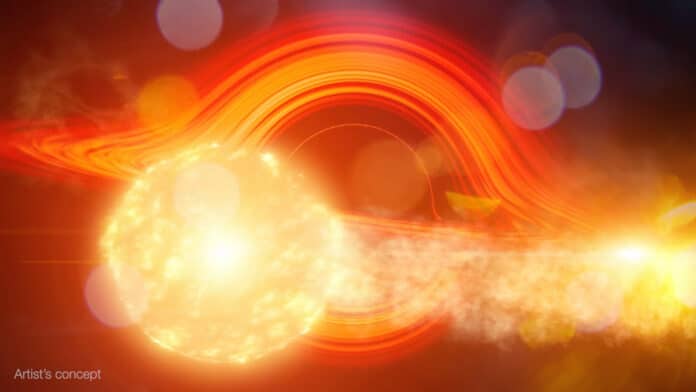NASA’s Neil Gehrels Swift Observatory, launched on Nov. 20, 2004, continues to investigate gamma-ray bursts, the most powerful explosions in the cosmos, and other high-energy phenomena.
Using Swift, scientists have discovered a snacking black hole in a distant galaxy repeatedly nibbling on a Sun-like star. The object’s discovery opens a brand-new era in Swift science thanks to a cutting-edge technique for processing data from the satellite’s X-ray Telescope (XRT).
This newly discovered hungry black hole is named Swift J023017.0+283603 (or Swift J0230 for short).
Gravitational forces produce powerful tides that rip a star apart into a jet of gas when a star wanders too close to a huge black hole. While the trailing edge leaves the system, the leading edge revolves around the black hole. Such events are known as Tidal Disruption Events. Astronomers view them as multiwavelength light flares produced when the debris strikes a disk of material already orbiting the black hole.
Astronomers have recently been looking into variations of this event, which they refer to as partial or recurrent tidal disruptions.
Every time one of those events occurs, a star in orbit comes close to a black hole and bulges outward, losing material while continuing to exist. The process is repeated until the star loses too much gas and finally splits apart.

The XRT initially spotted Swift J0230 on June 22, 2022. In the northern constellation Triangulum, 500 million light-years away, it ignited. On average, nine subsequent eruptions from the same site were seen by Swift’s XRT every several weeks.
Swift J0230, according to Evans and his team, is a recurrent tidal disruption of a Sun-like star orbiting a black hole with a mass more than 200,000 times that of the Sun. On each visit, the star, according to their estimates, sheds about three Earth masses of material. With the help of this system, scientists were able to calculate how interactions between various star kinds and black hole masses affect what we observe. It also serves as a link between other forms of suspected recurrent disruptions.
Alice Breeveld, a research fellow at the University College London’s Mullard Space Science Laboratory (MSSL), said, “We searched and searched for the event brightening in the data collected by Swift’s Ultraviolet/Optical Telescope. But there wasn’t any sign of it. The galaxy’s variability was entirely in X-rays. That helped rule out some other potential causes.”
The Swift X-ray Transient Detector, a novel, automated XRT observation search tool created by Evans, made it feasible to find Swift J0230.
The program compares the data to earlier XRT images of the same location after the instrument has observed a piece of the sky. A notification is sent to scientists if that region of the X-ray sky has altered. Evans and his coworkers could arrange further observations of Swift J0230 quickly.
The most potent explosions in the universe, gamma-ray bursts, were the focus of Swift’s early research. But ever since the satellite’s debut, scientists have seen how well it can examine a wide range of celestial objects, including comets and tidal disruptions.
S. Bradley Cenko, the mission’s principal investigator at NASA’s Goddard Space Flight Center in Greenbelt, Maryland, said, “Swift J0230 was discovered only about two months after Phil launched his program. It bodes well for the detector’s ability to identify other transient events and for Swift’s future exploring new spaces of science.”
Journal Reference:
- Evans, P.A., Nixon, C.J., Campana, S. et al. Monthly quasi-periodic eruptions from repeated stellar disruption by a massive black hole. Nat Astron (2023). DOI: 10.1038/s41550-023-02073-y
